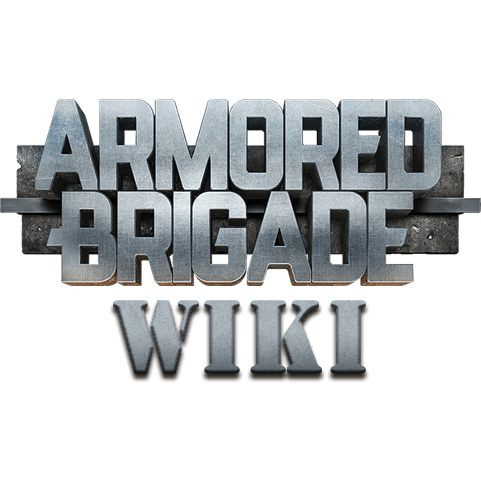Edit Page
The edit can be undone. Please check the comparison below to verify that this is what you want to do, and then publish the changes below to finish undoing the edit.
| Latest revision | Your text | ||
| Line 6: | Line 6: | ||
Despite the doctrinal innovations of the AirLand Battle, which recognized the Soviet Army's numerical preponderance could not be dealt with solely through reliance on firepower (as shown by the Israeli experiences during the Yom Kippur War of 1973), the US Army did not embrace the doctrine of maneuver to the same extent as the German or Israeli armies. In spite of its highly effective performance during Operation Desert Storm, the US Army did not display the sort of emphasis on speed, even at the cost of risking exposed flanks or bypassed enemy units, preferring instead to rely on a more methodical, phaseline-governed advance that maximized the impact of its considerable firepower. While this approach proved extremely effective against the Iraqi forces, it (along with political decision making) contributed to some Iraqi Republican Guard units escaping to Iraq, where they helped to put down 1991 uprisings in Iraq. |
Despite the doctrinal innovations of the AirLand Battle, which recognized the Soviet Army's numerical preponderance could not be dealt with solely through reliance on firepower (as shown by the Israeli experiences during the Yom Kippur War of 1973), the US Army did not embrace the doctrine of maneuver to the same extent as the German or Israeli armies. In spite of its highly effective performance during Operation Desert Storm, the US Army did not display the sort of emphasis on speed, even at the cost of risking exposed flanks or bypassed enemy units, preferring instead to rely on a more methodical, phaseline-governed advance that maximized the impact of its considerable firepower. While this approach proved extremely effective against the Iraqi forces, it (along with political decision making) contributed to some Iraqi Republican Guard units escaping to Iraq, where they helped to put down 1991 uprisings in Iraq. |
||
| − | The US Army's emphasis on firepower was reflected by the greater concentration of resources at division, as opposed to brigade, levels. Artillery is generally "attached" no lower than brigade. It is very common for the division HQ to attach one battalion of howitzers to each maneuver brigade.The brigade commander may then assign some of his artillery to "Direct Support" for some of his battalions, generally by battery. Direct Support means that the artillery is specifically tasked to fire in close support for that particular subunit. |
+ | The US Army's emphasis on firepower was reflected by the greater concentration of resources at division, as opposed to brigade, levels. Artillery is generally "attached" no lower than brigade brigade. It is very common for the division HQ to attach one battalion of howitzers to each maneuver brigade.The brigade commander may then assign some of his artillery to "Direct Support" for some of his battalions, generally by battery. Direct Support means that the artillery is specifically tasked to fire in close support for that particular subunit. |
While maneuver-oriented militaries have tended to make their brigades and even battalions more self-sufficient and capable of autonomous operations, the long-standing pro-firepower bias of the US Army manifested itself through centralizing control at divisional level of assets that in other armies were permanent components of brigades. To a certain extent it was due to the magnificent array of weapon systems US divisions had at their disposal, which made them, at least in terms of firepower, more powerful than any equivalent unit in the world. However, it is not a coincidence that armies that embrace maneuver warfare tend to be relatively small forces whose likely foes outnumber and/or outgun them. A trauma of total defeat by a more agile adversary, as in the case of France in 1940, can be a powerful stimulus as well. The US Army has lacked such experiences. In all of its conflicts in the 20th Century, if it did not outnumber its foes it certainly outgunned them. Superior firepower (including in the form of air-delivered ordnance) during World War II was more than enough to offset any deficiencies in maneuver. |
While maneuver-oriented militaries have tended to make their brigades and even battalions more self-sufficient and capable of autonomous operations, the long-standing pro-firepower bias of the US Army manifested itself through centralizing control at divisional level of assets that in other armies were permanent components of brigades. To a certain extent it was due to the magnificent array of weapon systems US divisions had at their disposal, which made them, at least in terms of firepower, more powerful than any equivalent unit in the world. However, it is not a coincidence that armies that embrace maneuver warfare tend to be relatively small forces whose likely foes outnumber and/or outgun them. A trauma of total defeat by a more agile adversary, as in the case of France in 1940, can be a powerful stimulus as well. The US Army has lacked such experiences. In all of its conflicts in the 20th Century, if it did not outnumber its foes it certainly outgunned them. Superior firepower (including in the form of air-delivered ordnance) during World War II was more than enough to offset any deficiencies in maneuver. |
||
